In your backyard or garden plot, you want to have bright, original and, at the same time, unpretentious plants that can decorate the landscape throughout the year.
Representatives of the Deren genus correspond to these qualities. In summer, numerous varieties of derain delight with white or golden inflorescences and colorful foliage.In autumn you can admire white, blue or black berries against a background of crimson or scarlet leaves. Winter allows you to see the branches of the bush - dark red, orange, olive, green, brown...
There are a lot of types of wood, but in ornamental gardening these four are mainly used:
- Derain white
- Derain sucker
- Derain blood red
- Canadian dogwood
Varieties of white dogwood (Cornus alba) with photo
This type of derain is the most common and is known as white or Tatar svidina. An expressive shrub that remains decorative all year round. A distinctive feature of the white tree is its erect stems with red bark and large leaves. The species is undemanding to soil, moisture-loving, shade-tolerant, frost-resistant, and grows quickly. The most famous varieties of this species:
Elegantissima
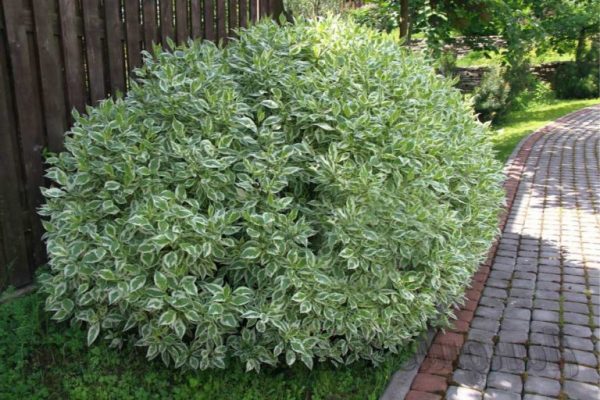
Elegantissima
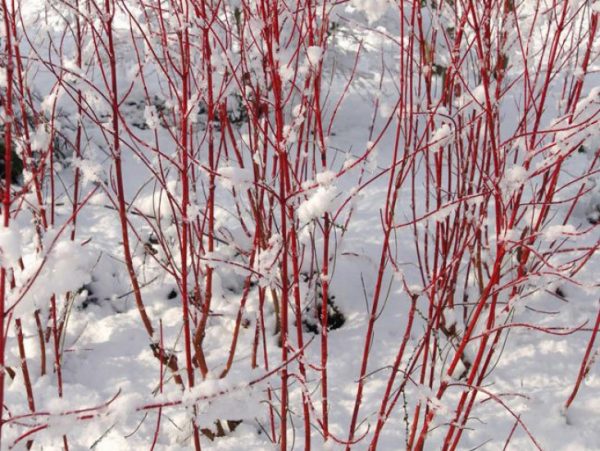
Elegantissima variety in winter
- Large (3 m) shrub with a spreading crown. Cherry-colored shoots.
- It is distinguished by bluish-green leaves with an uneven white stripe along the edges. Autumn leaf color is purple and brown-red.
- Flowering lasts until autumn. The berries are inedible.
- It tolerates drought and shaping haircuts well and recovers quickly after it. A rejuvenating haircut is carried out once every 5-7 years.
- It is used in landscaping parks, school grounds, and for arranging compositions with coniferous and herbaceous plants.
Prefers sunny places, but does not lose its decorative color even when grown in the shade.
Aurea
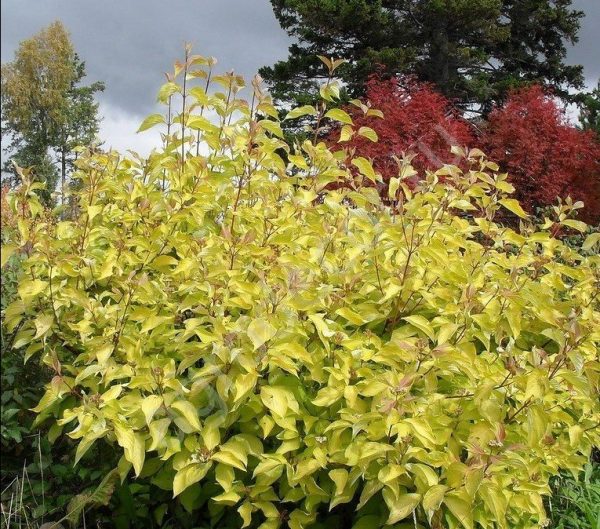
Aurea
- The bush is compact, 1.5-2 m high, with a spherical crown.
- The variety impresses with the contrast of large lemon leaves and red branches throughout the warm season.In autumn, the color of the leaves changes to red-yellow.
- Creamy white inflorescences appear in May-June; re-blooming is possible in autumn. The berries are bluish-white.
- The variety loves illuminated places; the golden color does not appear in the shade.
- Grows well in urban environments. Used for landscaping parks, school grounds, and for organizing green hedges.
Guhalti (Gouchaultii)
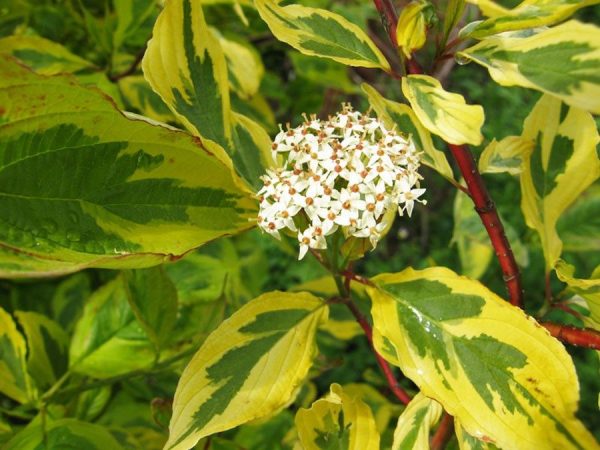
Guhalti (Gouchaultii)
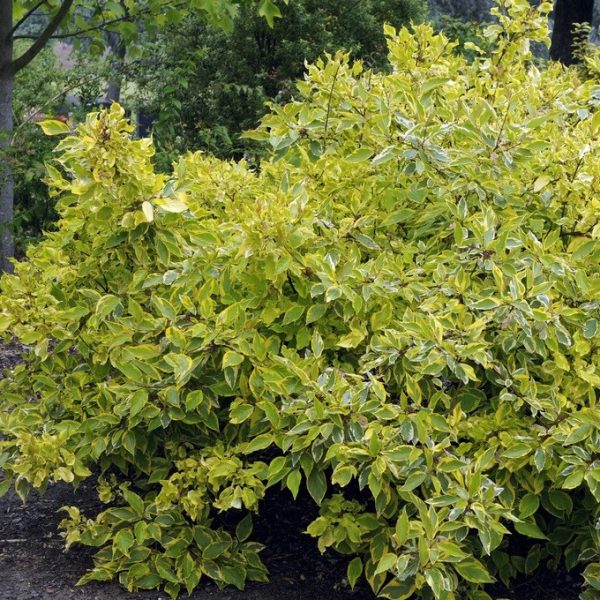
Guhalti (Gouchaultii)
- Medium-sized shrub up to 2 m high.
- The leaves are medium-sized, oval, with a yellowish-pink edge. In autumn they will take on purple-red tones.
- Cream flowers bloom in June and bloom throughout the summer, contrasting favorably with the pale blue fruits.
- Pruning to compact the crown is recommended. Grows quickly.
- Used for compositions with evergreens and herbaceous plants. Recommended for landscaping urban spaces.
Kesselringii
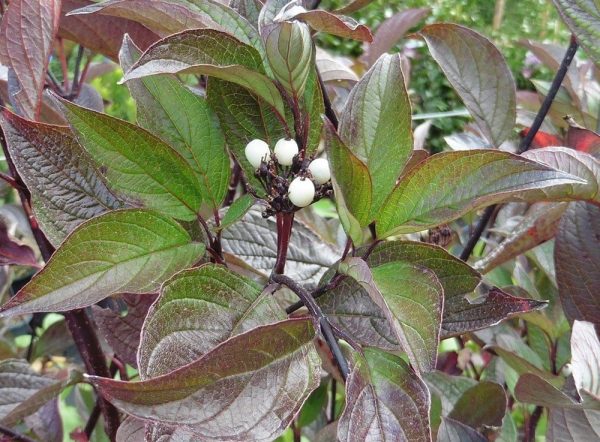
Kesselringii
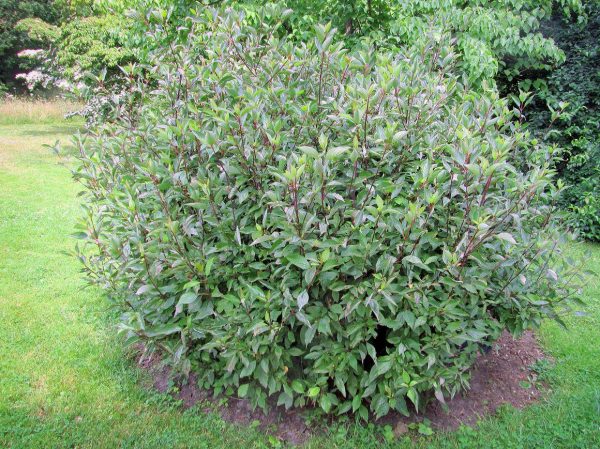
Kesselringii
- Shrub 3 m high. Decorative with red-violet shoots and dark green leaves with a reddish tint (12 cm). Autumn foliage color is purple or brownish-red.
- Cream-white flowers appear in early summer. The fruits are first white, then bluish.
- Withstands haircuts very well.
- Used for landscaping parks, playgrounds, and organizing green hedges. Used for weaving baskets and other products.
Only 1-2 year old shoots have a bright color, so the shrub needs a rejuvenating pruning. Regular pruning will significantly reduce the size of the plant.
Cream Cracker
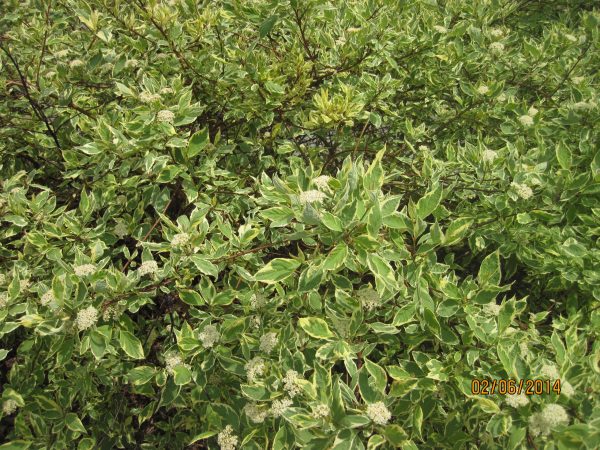
Cream Cracker
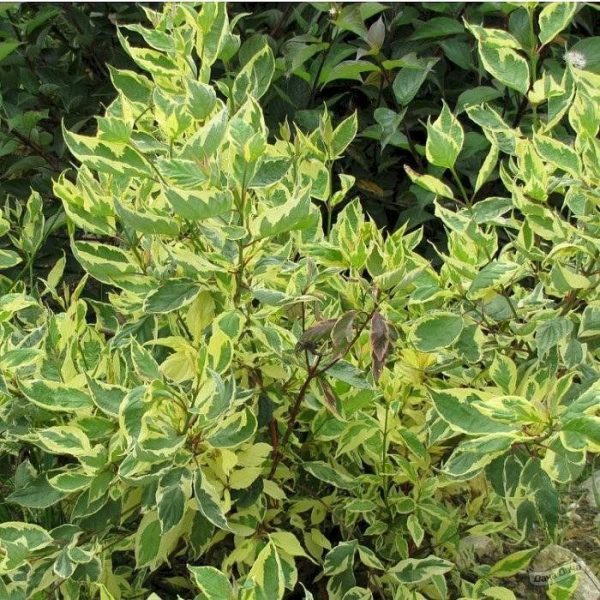
Cream Cracker
- A bush with a height of 0.8 m to 2.5 m, a width of 1 m to 2 m with thin flexible shoots. The bark of young shoots is scarlet.
- Gray-green leaves are edged with a cream stripe. The autumn color of the leaf blades is pink.
- Flowering continues from July to August.
- Does not tolerate stagnation of moisture. Not susceptible to diseases and pest attacks.
- The variety is used as a background for low shrubs and herbaceous plants, and winter dry bouquets.
Sibirica

Sibirica
- Tall spreading shrub up to 3 m in height. It is distinguished by the coral-red color of its young shoots.
- The leaves are dark green. In autumn it is distinguished by a purple or reddish tint of leaves, which is facilitated by a sufficient amount of rain.
- Blooms from June to autumn.
- Regular anti-aging haircut is necessary.
Sibirica Variegata

Sibirica Variegata
- Shrub up to 2 m high. Decorative with bright red shoots.
- The leaves are large with a wide white border, spots and stripes on a dark green background as in the photo.
- Flowering occurs in May-June. The flowers are creamy-greenish and fragrant. The fruits are pale blue with a bluish tinge.
- Almost never gets sick.
To obtain brightly colored shoots, it is necessary to cut shoots older than 3 years of age.
Shpeti (Spaethii)
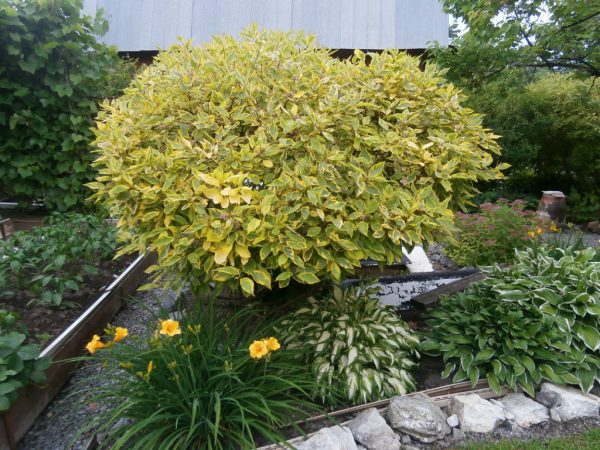
Shpeti (Spaethii)
- Fast growing variety (2.5-3 m). The crown is spreading, with red shoots.
- On the green leaves along the edge there is an uneven golden border, spots and stripes. This original color remains throughout the growing season.
- Blooms in early summer. Fruits are rarely set.
- Frost resistance is average, young shoots may freeze, but they quickly recover in the spring.
- The variety is universal in use.Equally good in both group and single plantings.
Regnzam / Red Gnome
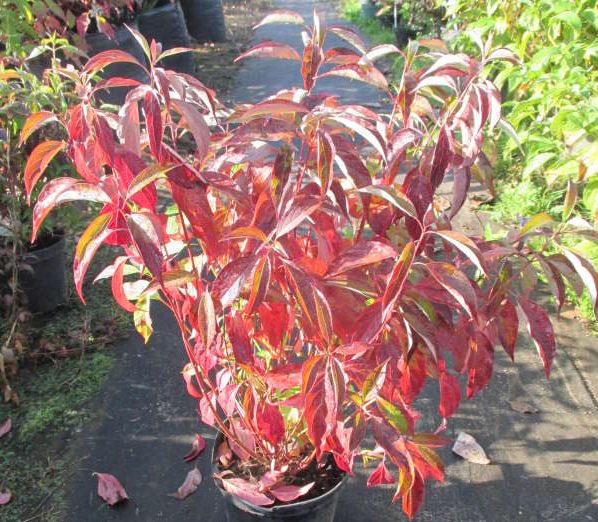
Regnzam / Red Gnome
- A low-growing shrub 0.9-1.2 m high and wide. The shoots are bright red.
- The leaves are dark green, burgundy in autumn
- Blooms in June. The flowers are creamy white. The fruits are white and ripen in August.
- Used in rockeries, mixborders, and single plantings.
Baton Rouge / Minbat
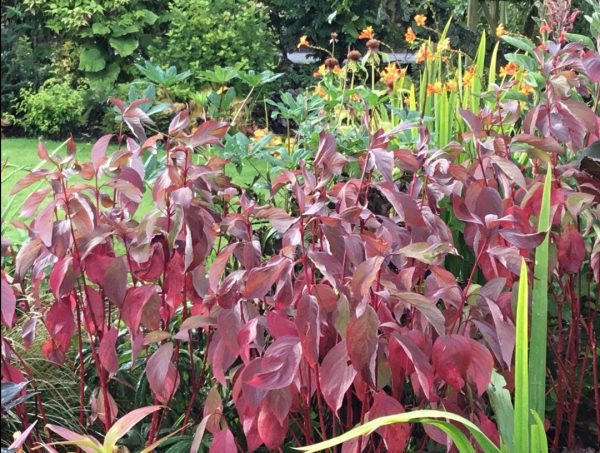
Baton Rouge / Minbat
- Shrub 1.5-2 m high. The crown is raised and dense.
- The shoots are hard and straight. The bark on young shoots is intensely coral red. On mature shoots the bark is brownish-red.
- The leaves are slightly curled, show a white-silver underside, and turn red in the fall.
- Flowers bloom in mid-summer.
To maintain decorativeness, it is recommended to trim shoots every 2-3 years.
Ivory Halo
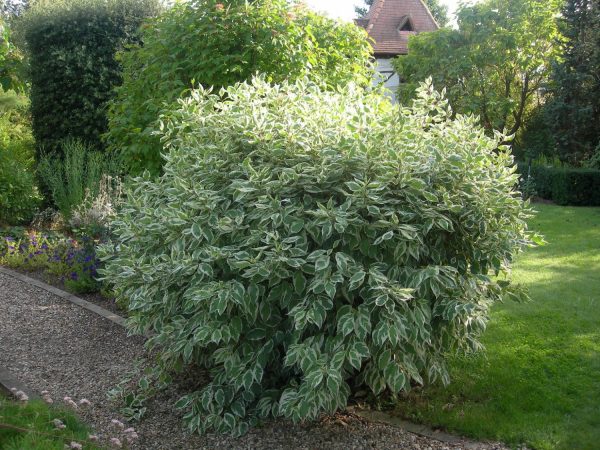
In the photo is the Ivory Halo variety.
- Medium-sized compact shrub (1.2-1.5 m). Cherry-colored shoots look most impressive in winter.
- The leaves are green with a white border and streaks. In autumn they turn deep red.
- In severe winters, the tips of the shoots may freeze.
- It is used for compositions with evergreen and herbaceous plants, creating hedges and borders, and for urban landscaping.
Only 1-2 year old shoots are painted in bright color, so a rejuvenating haircut is necessary to restore their decorative appearance.
Derain sucker
Unlike white dogwood, this species produces many basal flexible shoots, which, when in contact with the ground, easily take root. This property is used to strengthen slopes.The oval leaves are large, up to 10-12 cm long, small flowers are yellowish in color. Buds are formed on 5-6 year old plants.
Sprouting dogwood loves moist soils and is shade-tolerant. Frost resistance is average. Grows better in partial shade. Regular pruning is recommended, every few years. Regrown branches acquire brighter shades.
Important! The color of the bark of the shoots of the scion loses its attractiveness as they age.
Kelsey

Kelsey
- A low-growing shrub, 0.5-0.8 m high, producing a mass of basal shoots. Branches with pale yellow bark, turning red towards the tips.
- The leaves are green, slightly convex; in autumn, the shades of the leaf blades alternate from yellow to fiery red.
- Flowering continues from June to November with green flowers. The berries are white.
- The frost resistance of the variety is average; it may suffer from late frosts. Used to decorate flower beds and alpine slides.
Flaviramea
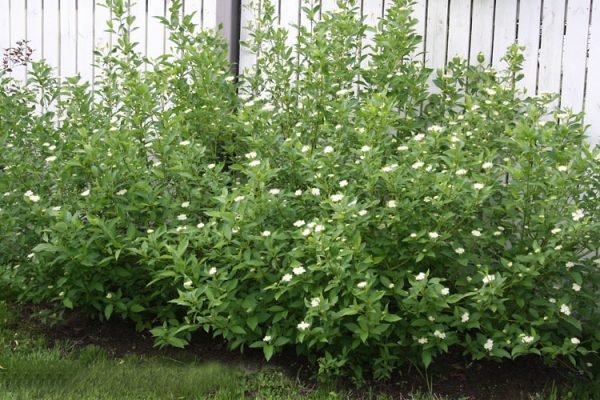
Flaviramea

The Flaviramea variety stands out for its yellowish shoots
- A fast-growing variety of derena with a dense spreading crown, 2-2.5 m in height. In spring and autumn the branches are olive green.
- The glossy green leaves turn red in the fall, but often remain green until frost.
- It blooms from late May to autumn with yellowish-white flowers.
- Tolerates pruning well. During the season it grows by 20 cm.
- Used for urban landscaping, strengthening ravines and slopes.
This variety looks very impressive when planted in groups with trees with red and orange shoots.
White gold
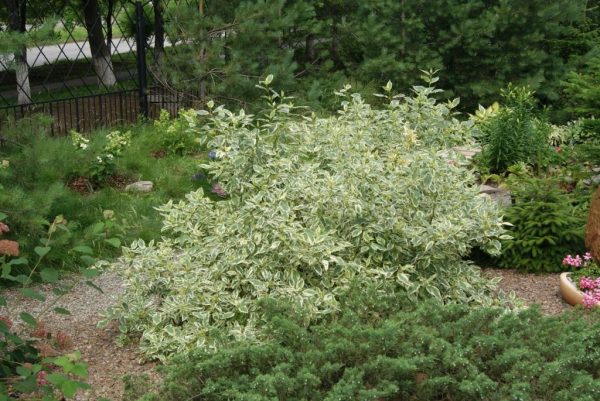
White gold
- Fast growing, dense bush 2.5 m high and 3 m wide. The bark of flexible, long branches is yellow-olive in color.
- On large leaves, 7-8 cm long, there is a noticeable creamy-white border. The leaf blade is slightly pubescent underneath. In autumn the foliage turns yellow.
- Regular pruning is recommended. Annual growth is 20 cm.
Young shoots are burned in bright sun, so it is better to plant the plant in partial shade.
Nitida
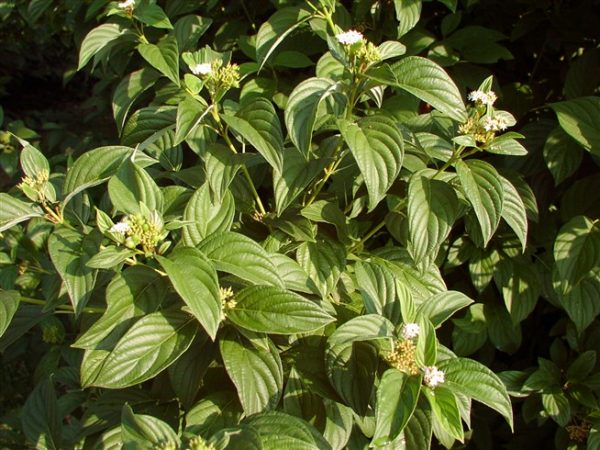
Nitida
- A tall shrub with dense stems 2-3 m high. The shoots, drooping, easily take root when in contact with the ground.
- The green leaves are pointed, the veins are pronounced, and do not change color until frost.
- The inflorescences are yellowish-white. Flowering continues from late May until autumn.
- Not afraid of bright sun, shade-tolerant, moisture-loving, wind-resistant. The shrub tolerates shaping pruning well.
- Used to strengthen slopes and for park landscaping. Goes well with tree varieties with red and orange branches.
Cardinal
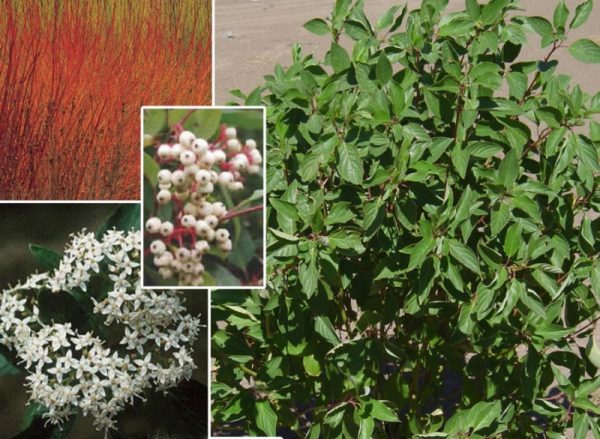
Cardinal
- Bush with a round, spreading crown, up to 2 m in height.
- A special feature of the Cardinal variety is the change in shades of bark on the branches. From olive in summer to red in autumn.
- The leaves are green, and with the onset of cold weather they turn yellow and red.
- Flowering continues all summer.
- It is used for landscaping public gardens, strengthening ravines, and decorating ponds.
Isanti
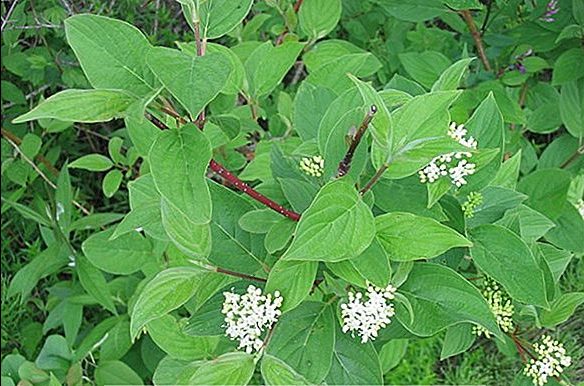
Isanti
- A low variety with shoots up to 1-1.5 m long.
- The bark of the shoots is red throughout the season.
- The leaves are dark green, turning dark red towards the end of summer.
- Small white inflorescences in May and June contrast against the background of foliage.
- The variety is good for planting in flower beds, alpine hills, and for zoning various areas.
Blood red dogwood (Cornus Sanguinea)
Low, up to 3 m in height, shrub, distinguished by red, purple shades of foliage and shoots. The plant retains its decorative appearance in any season. In winter, against the backdrop of snow, bright shoots catch the eye from afar. In spring, drooping branches are covered with small flowers, then foliage appears.
On one plant and even on one branch, the leaves can be greenish, purple, red with a purple tint, as in the photo. The fruits are small, blue-black small drupes. They stay on the branches until frost.
This type of tree is shade-tolerant and winter-hardy; it can be grown in almost any place, even one that is not suitable for other plants.
Green Light
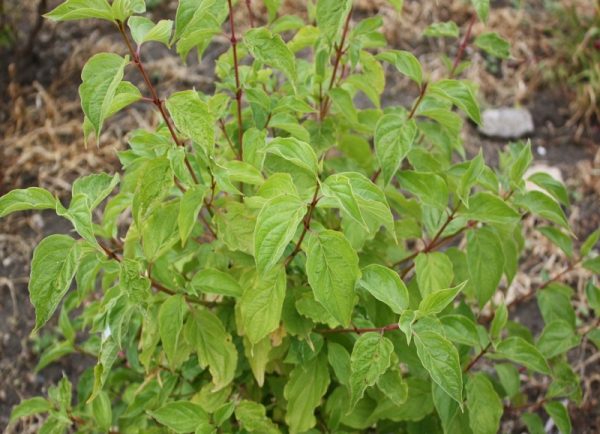
Green Light
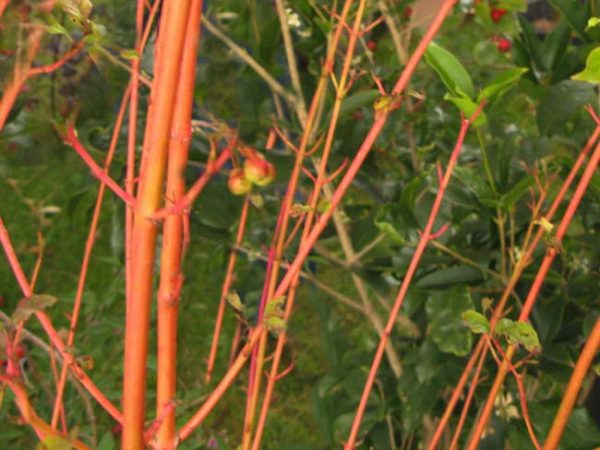
Green Light
- Spreading medium-sized shrub (1.5-2 m). The shoots are orange-green in winter.
- The leaves are bright green, up to 10 cm long, dark red in autumn.
- The flowers are white and fragrant. Flowering in June.
- Recommended for creating hedges.
Midwinter Fier
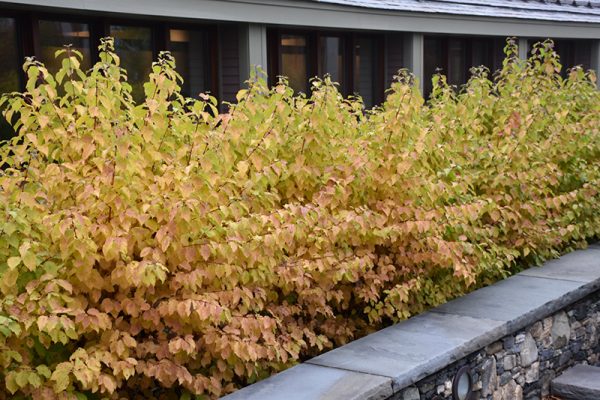
Midwinter Fier

Midwinter Fier
- Bush 1.5-2 m high. Shoots are shiny in winter, light orange-yellow in the lower part, red in the upper part, completely red on the sunny side.
- Young leaves are light green, slightly bronze in color, turning yellow in autumn.
- The inflorescences are small. White flowers appear in June.
- To maintain decorativeness, old shoots should be pruned at the beginning of the growing season to stimulate the growth of new brightly colored shoots.
Compressa

Compressa
- Compact shrub (1.5 m) with a dense vertical crown.
- Young shoots are greenish-brown in color, becoming reddish-brown over time.
- The leaves are small, wrinkled, dark green, curved towards the stem. In summer it is a rich green color; by autumn the color changes, turning red to burgundy-violet.
- Doesn't bloom or bear fruit.
- The variety is used to create low-growing hedges, alpine slides and rockeries.
The variety develops slowly. Pruning should be gentle.
Annie's Winter Orange
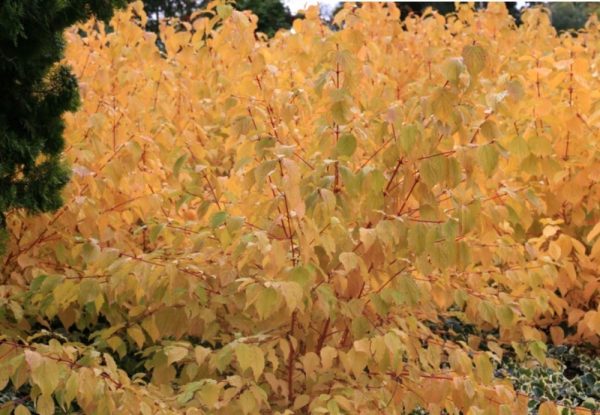
Deren Annie's Winter Orange in autumn
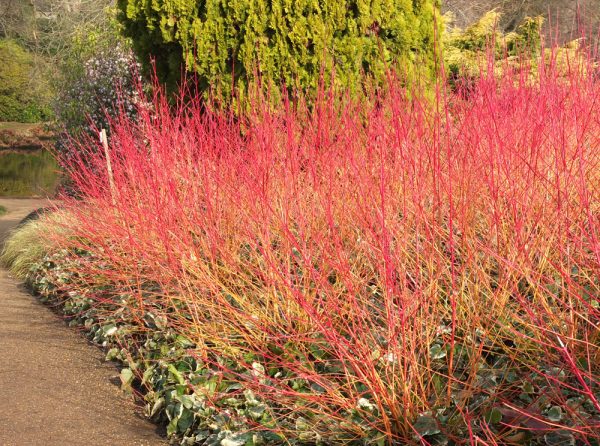
Annie's Winter Orange
- The bush is very compact, up to 1.5 m high and wide. Young shoots are yellow-orange in summer, dark orange in the lower half and red in the upper half in winter. The photo does not convey all the beauty of the color of the shoots. With age, the orange color of the branches remains.
- The leaves are slightly shiny, bronze-green when young, bright green in summer, orange-yellow in autumn.
- To maintain decorativeness, it is recommended that once a year in early spring, cut old shoots to a height of 30 cm from the ground to stimulate the growth of new brightly colored shoots.
- Recommended for planting in groups to create green hedges.
Canadian dogwood (Cornus canadensis)
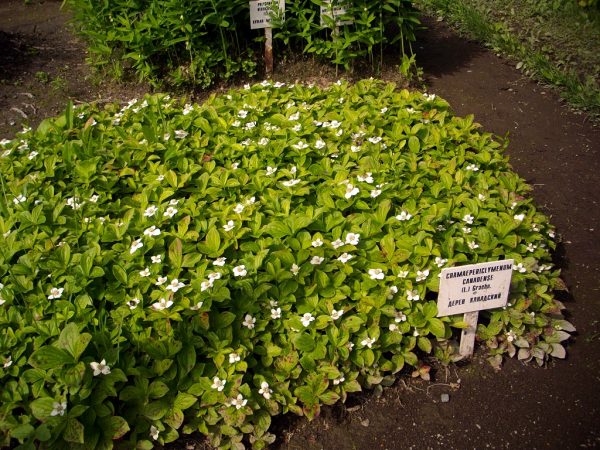
Canadian dogwood (Cornus canadensis)
- Creeping subshrub up to 20 cm high, branched, creeping root. The shoots are herbaceous, tetrahedral, with sparse hairs. In autumn, the stems die off, except for the very bottom part.
- Green leaves are collected in tassels of 4-6 pieces, from the middle of which small green flowers with large white bracts appear.
- Blooms in June-July. The flower opens its petals and shoots out pollen in less than half a millisecond. The fruits are bright red berries that remain on the bushes until late autumn.
- This type of tree grows slowly. Likes slightly acidic, moist soil with good drainage. Can grow in partial shade.
- Goes well with rhododendrons and azaleas. Grows well under tree trunks.
The fruits contain pectin and are used in the production of homemade confectionery products. Medicinal plant.
Rules for planting and caring for shrubs
To plant dera, you should choose a sunny area, but partial shade is also suitable. For planting, seedlings no older than four years old are used; they take root faster.
Before planting, the seedling should be immersed in water and kept in it for several hours. If the seedling has a closed root system, then this procedure can be skipped. The size of the hole should be slightly larger than the volume of the earthen ball with roots. Despite the fact that turf is unpretentious to the composition of the soil, it is recommended to add organic fertilizers to the planting hole.
For swampy soils or with close groundwater, drainage is arranged. After planting, the tree trunk circle is compacted and watered abundantly. After watering, the tree trunk circle is mulched with organic material. It is necessary to ensure that the root collar is flush with the ground surface.
Young bushes are watered regularly 1 - 2 times a week. Mature bushes need watering only during periods of prolonged drought. The turf does not need fertilizing.
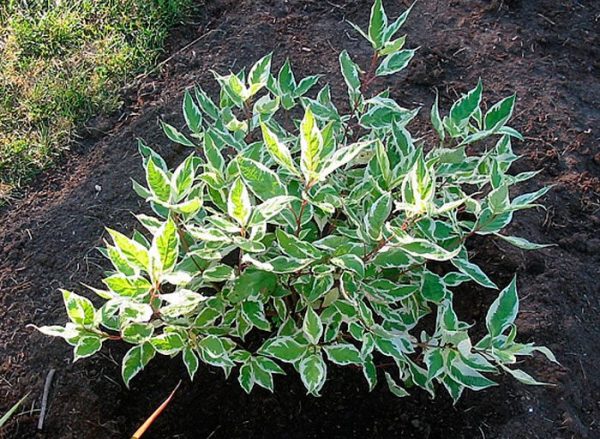
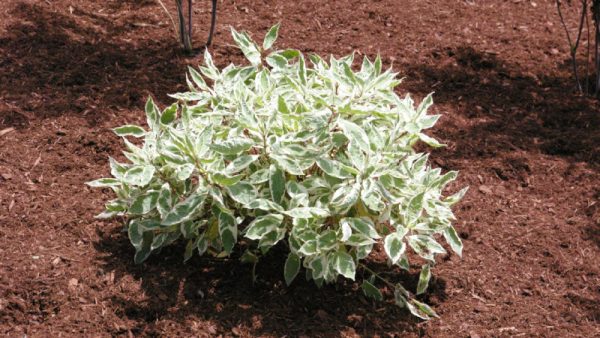

 (11 ratings, average: 4,45 out of 5)
(11 ratings, average: 4,45 out of 5) CUCUMBERS NEVER GET SICK, I'VE BEEN USING ONLY THIS FOR 40 YEARS! I SHARE A SECRET WITH YOU, CUCUMBERS ARE LIKE THE PICTURE!
CUCUMBERS NEVER GET SICK, I'VE BEEN USING ONLY THIS FOR 40 YEARS! I SHARE A SECRET WITH YOU, CUCUMBERS ARE LIKE THE PICTURE! You can dig a bucket of potatoes from each bush. Do you think these are fairy tales? Watch the video
You can dig a bucket of potatoes from each bush. Do you think these are fairy tales? Watch the video
 How our fellow gardeners work in Korea. There is a lot to learn and just fun to watch.
How our fellow gardeners work in Korea. There is a lot to learn and just fun to watch. Eye trainer. The author claims that with daily viewing, vision is restored. They don't charge money for views.
Eye trainer. The author claims that with daily viewing, vision is restored. They don't charge money for views. A 3-ingredient cake recipe in 30 minutes is better than Napoleon. Simple and very tasty.
A 3-ingredient cake recipe in 30 minutes is better than Napoleon. Simple and very tasty. Therapeutic exercises for cervical osteochondrosis. A complete set of exercises.
Therapeutic exercises for cervical osteochondrosis. A complete set of exercises. Which indoor plants match your zodiac sign?
Which indoor plants match your zodiac sign? What about them? Excursion to German dachas.
What about them? Excursion to German dachas.